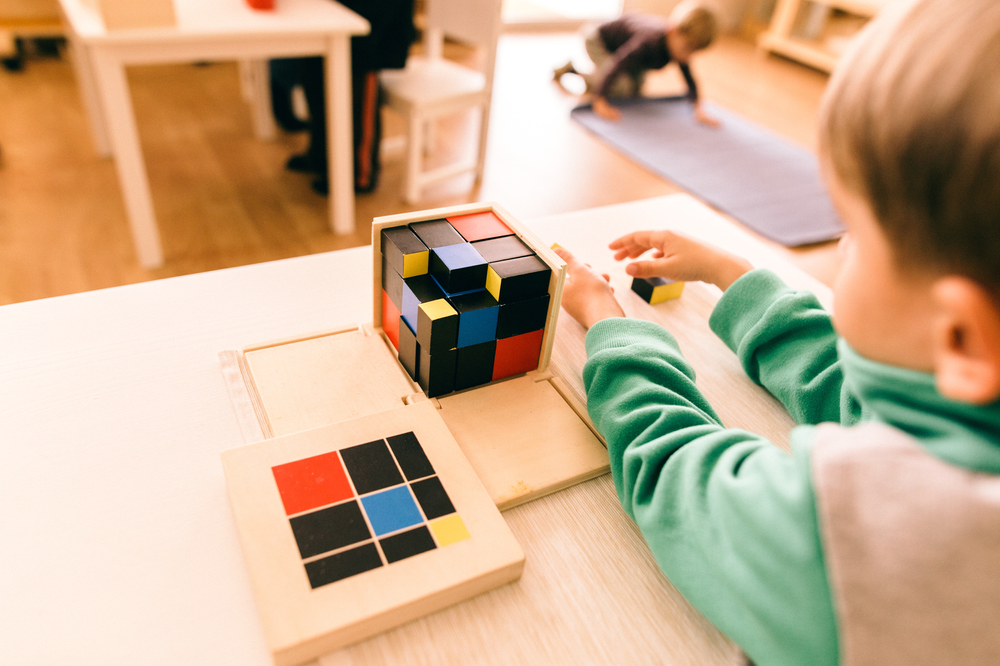
The first question most parents ask when they visit their child's Early Childhood Montessori classroom?
"Why don't they do this at home?"
When you're visiting your child's environment, don't be surprised if you see them doing things or caring for themselves in ways that, at home, you wish they'd do. While you might wonder why you have to keep reminding them to hang up their own towel in your bathroom, you''ll observe them preparing food for friends, from opening the refrigerator and selecting produce to washing it, chopping it, displaying it on a serving tray, sharing it with others, cleaning up and moving on. You might see your child, who whines at home until you relent and hand them your smartphone to play with, engaged in a thirty minute reading exercise without ever looking away from their work. You might see your rough-and-tumble child soothing a friend who is sad.
But you also might see your supertalker sitting quietly alone. You might see your child who is quiet and reserved at home rambunctiously banging around with friends.
You will undoubtedly see something happen, or, more precisely, about to happen that you are certain, if you don't intervene, will (cause a ruckus, make a mess, create conflict, make someone angry, or otherwise unravel the lovely peaceful environment you're observing.) You will undoubtedly see something fall or slip or spill or scatter that you know, down deep in your polite, well-mannered heart, you absolutely must help to fix.
Sit tight.
Notice.
Watch.
Here are some things to help lower your heart rate while you do:
Your child's teachers are well-trained observers who spend hours in this environment every single day. They know the children well. They know who gets along and who needs space. They know who can carry that bucket independently and who needs a friend to help. And they know that there is far more to learn when things go wrong than when they go right.
Your child is a complicated, complex, context-influenced person, separate from you and your family and leading a rich, nuanced and sometimes confuddling life all their own. Just like you are. Seeing a differently side of them at school doesn't mean that they are any more authentic at school or at home. It means you're getting to see another part of their richness, the one that's evoked in this particular setting.
Your child's classroom is sometimes peaceful and sometimes chaotic. Sometimes the children look like they're all working together and sometimes it feels like they don't even speak the same language. When you observe, you're watching one half hour or so in an environment with its own rules, norms, languages, inside jokes, memories, and traditions.
Sit tight.
Notice.
Watch.
The observation is the start of the conversation, the shared experience you and your child and your child's teacher have had to lead to great conversations after its done. Ask your child open-ended questions about what you've seen. Ask them to, "Tell me more about…" or tel them "I was so curious about…" Ask your child's teacher for details about the parts of the observation that stuck with you. What choices did they make about what to respond to and what to ignore? How typical is the day you saw? How does what you observed confirm what you know about your child or help you to know more? What might you know that could help your child's teacher know more about your child?
Remember: this is a Children's House. You are, by design and intent, an outsider here. Observe with the curiosity of a scientist in the wild, without presumptions about what you might see or what it means. Instead, go in with an open mind, an open heart and an open notebook, and let your observation be one more piece of a vibrant tapestry to understand and care for your child.
#June
